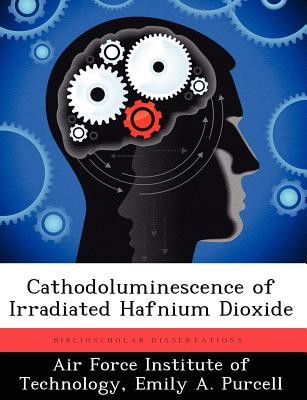
- We will send in 10–14 business days.
- Author: Emily A Purcell
- Publisher: BiblioScholar
- ISBN-10: 1249450950
- ISBN-13: 9781249450955
- Format: 18.9 x 24.6 x 0.5 cm, softcover
- Language: English
- SAVE -10% with code: EXTRA
Cathodoluminescence of Irradiated Hafnium Dioxide (e-book) (used book) | bookbook.eu
Reviews
Description
The purpose of this research is to understand the effect of radiation on HfO2 thin films, and to compare the quality of HfO2 thin films produced by both atomic layer deposition (ALD) and pulsed laser deposition (PLD); PLD samples had varying substrate temperatures during deposition (300-C, 500-C, and 750-C). The entirety of this research was conducted using cathodoluminescence (CL) as the examination method. The excitation source was a Kimball Physics EMG-12 electron gun. The photomultiplier tube contained a gallium arsenide photocathode. Measurements were made with beam energies ranging from 1 to 10 keV and beam currents ranging from 30 to 50 A, both at room temperature and at 7K. The experimentally-determined band gap of HfO2 was consistent with published data, but many other features found in the literature were not present in the CL data obtained. HfO2 appeared to be radiation hard up to the levels of radiation to which it was exposed. A higher substrate temperature during deposition for PLD samples produced a better material than lower temperatures. ALD produced a more consistent thickness but PLD ultimately produced a better quality material with respect to the spectrum obtained.
EXTRA 10 % discount with code: EXTRA
The promotion ends in 17d.19:27:27
The discount code is valid when purchasing from 10 €. Discounts do not stack.
- Author: Emily A Purcell
- Publisher: BiblioScholar
- ISBN-10: 1249450950
- ISBN-13: 9781249450955
- Format: 18.9 x 24.6 x 0.5 cm, softcover
- Language: English English
The purpose of this research is to understand the effect of radiation on HfO2 thin films, and to compare the quality of HfO2 thin films produced by both atomic layer deposition (ALD) and pulsed laser deposition (PLD); PLD samples had varying substrate temperatures during deposition (300-C, 500-C, and 750-C). The entirety of this research was conducted using cathodoluminescence (CL) as the examination method. The excitation source was a Kimball Physics EMG-12 electron gun. The photomultiplier tube contained a gallium arsenide photocathode. Measurements were made with beam energies ranging from 1 to 10 keV and beam currents ranging from 30 to 50 A, both at room temperature and at 7K. The experimentally-determined band gap of HfO2 was consistent with published data, but many other features found in the literature were not present in the CL data obtained. HfO2 appeared to be radiation hard up to the levels of radiation to which it was exposed. A higher substrate temperature during deposition for PLD samples produced a better material than lower temperatures. ALD produced a more consistent thickness but PLD ultimately produced a better quality material with respect to the spectrum obtained.


Reviews